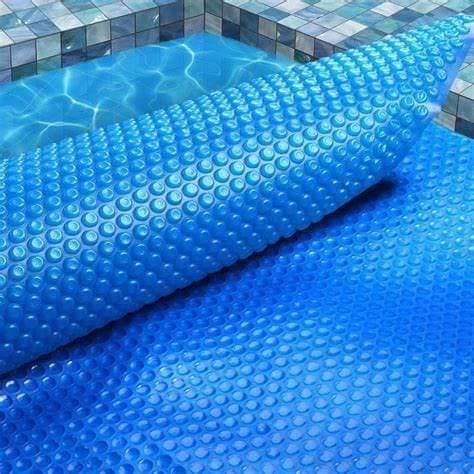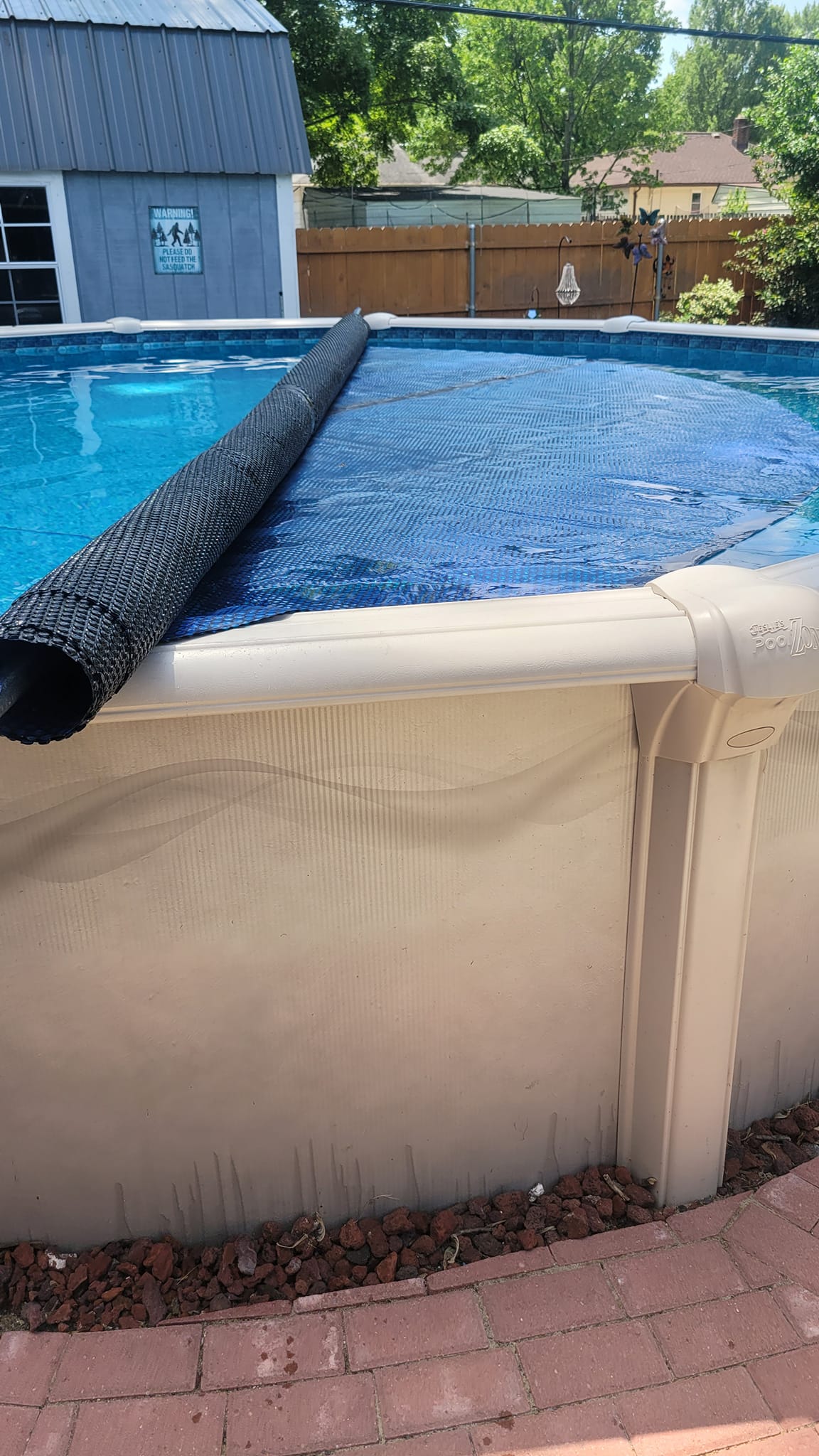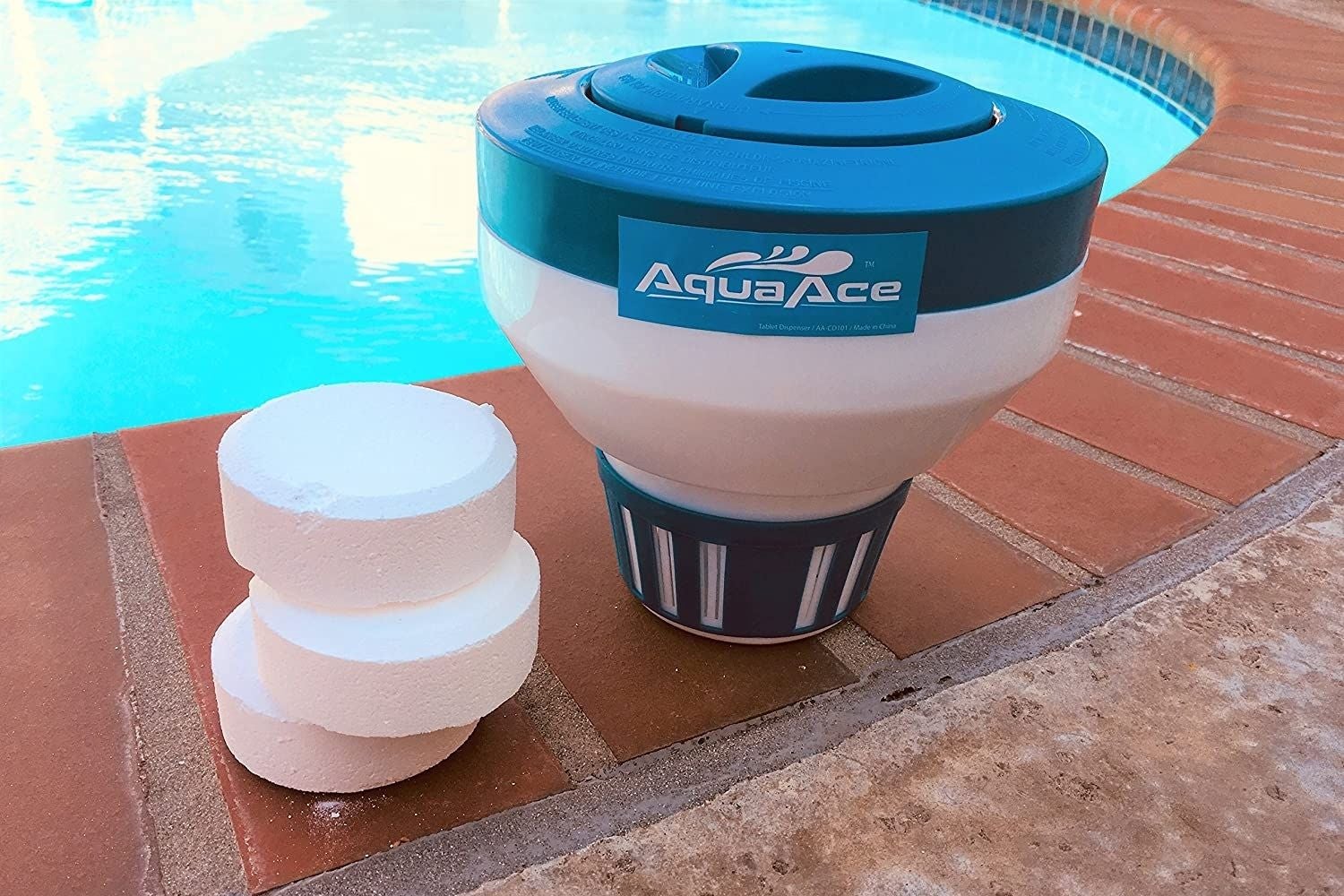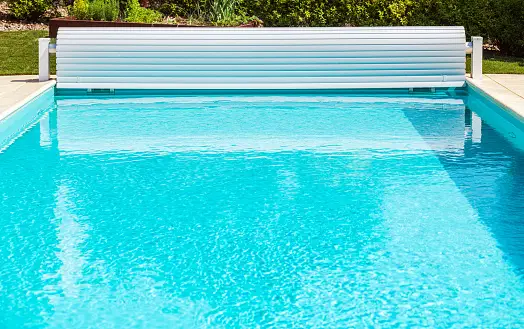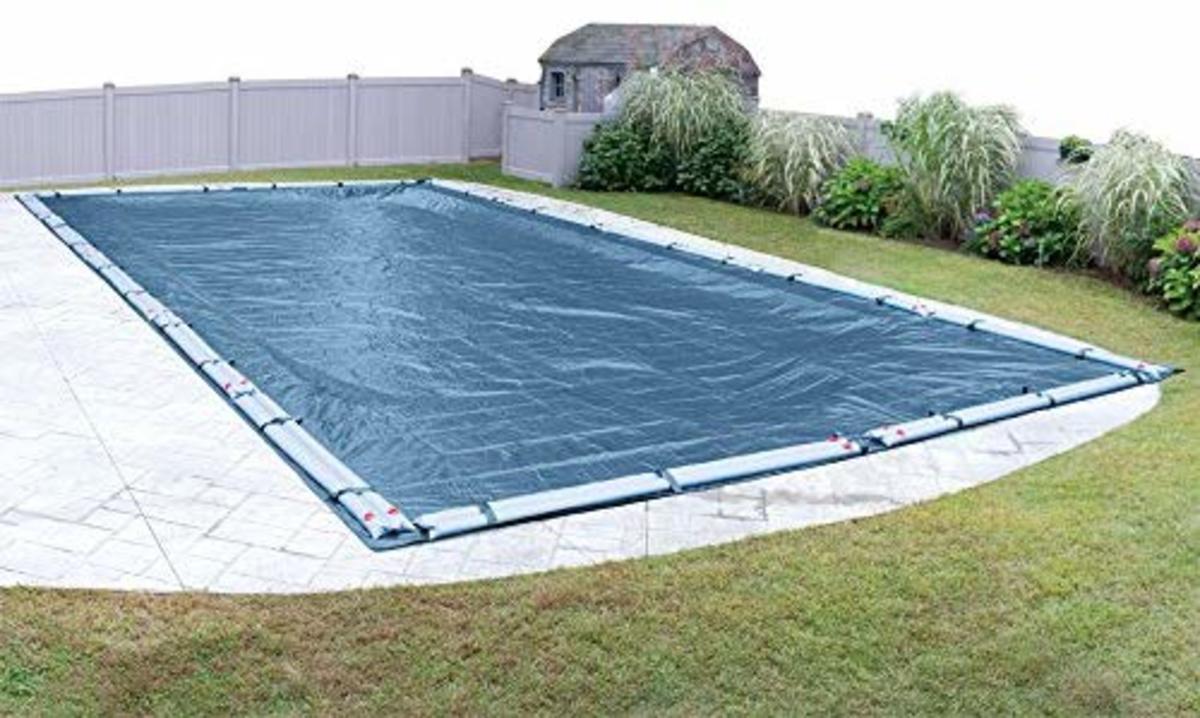Solar pool cover bubbles up or down? Good question. When using a solar pool cover, the bubbles should be facing down, towards the water. This orientation allows the sun’s heat to be captured by the bubbles and then transferred more efficiently into the pool water. The smooth side of the cover faces up, exposed to the sunlight. This setup maximizes the heating effectiveness of the solar cover.
Using a solar pool cover is a smart way to keep your pool warm and reduce evaporation, but it raises an important question: should the pool solar bubbles be facing up or down? This seemingly simple aspect can significantly impact the cover’s effectiveness.
In this article, we dive into the science behind solar pool covers, exploring how their orientation affects their performance. We’ll provide you with the insights needed to make the most out of your pool cover, ensuring your pool stays warm and inviting.
Also Read: Harnessing the Sun: Solar Pool Covers Emerge as Game-Changers in Residential Pool Care
Why should Solar Pool Cover Bubbles face Down
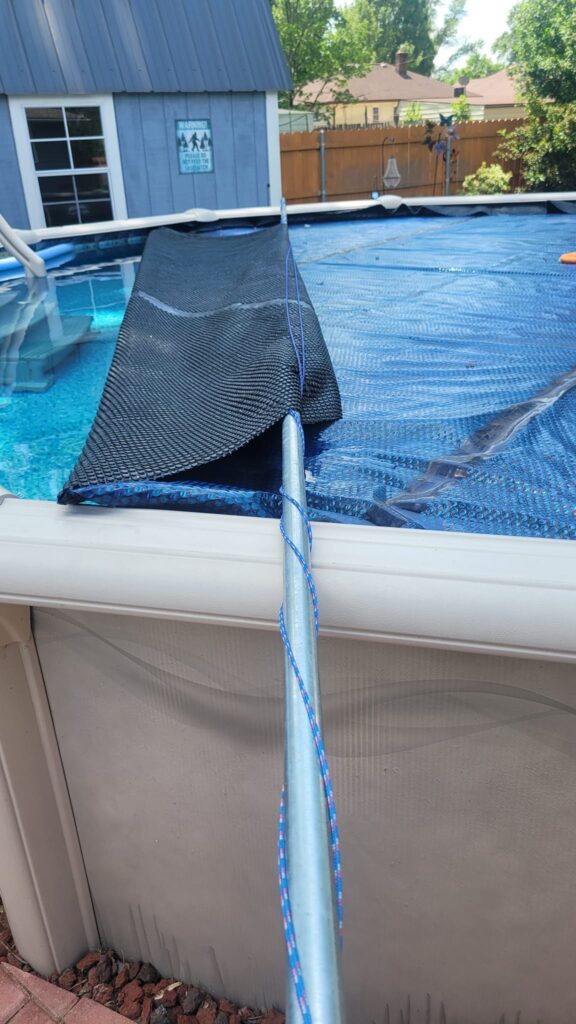
The reason solar pool cover bubbles should face down, towards the water, is due to the design and function of the cover. Here are the key reasons:
1. Heat Transfer
The bubbles on a solar pool cover are designed to work like mini magnifying glasses. When they face down, they focus the sunlight into the water, heating it more effectively. This design helps in capturing and transferring solar energy directly into the pool.
2. Insulation
The air within the bubbles acts as an insulator. When the bubbles are facing down, they create a barrier between the water and the air, reducing heat loss. This insulation keeps the water warmer for longer periods, especially during cooler nights.
3. Evaporation Reduction
A major benefit of a solar pool cover is its ability to reduce water evaporation. With the bubbles down, the cover adheres better to the water surface, minimizing evaporation, which is a primary cause of heat loss in pools.
4. Durability and Efficiency
Placing the bubbles down also ensures that the cover functions efficiently and lasts longer. The smooth side up is more resistant to UV rays and chemical exposure from pool water, which can degrade the cover over time.
5. Optimal Coverage
The bubble side down ensures a snug fit over the water surface, maximizing the cover’s coverage and effectiveness in heat retention and evaporation reduction.
By having the bubbles face down, the solar pool cover operates at its optimal efficiency, keeping your pool warmer and reducing the costs associated with heating and water replenishment.
What happens if Solar Pool Cover Bubbles face up
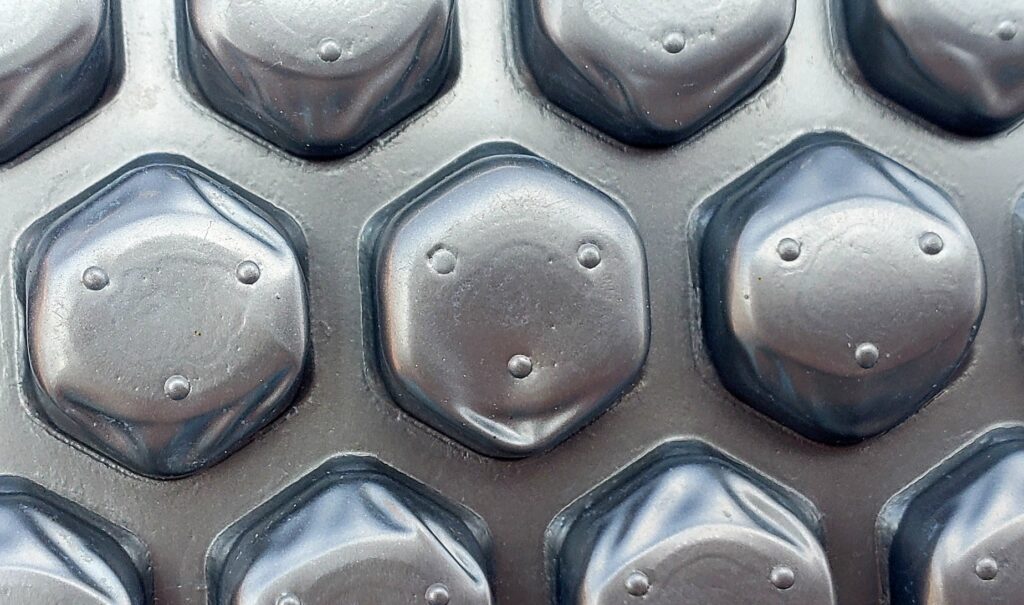
If you install your cover with its bubbles facing up, the process of warming your pool will take longer and the sun might even destroy the bubbles. The reason behind this is that the bubbles are not facing your pool’s water directly.
They can easily overheat from the sun’s rays since they don’t have a place to take the trapped heat. This also means that the heat needs to travel through a third layer, the cover before it reaches the water.
To ensure that your cover lasts longer, always cover it with a sheet that reflects the rays when not in use or put it in a place with a shade like a shed or a garage. These gears retain a lot of heat and if not transferred to the water, they can easily “bake” themselves and reduce their life.
Do you run your pool with the solar cover on?
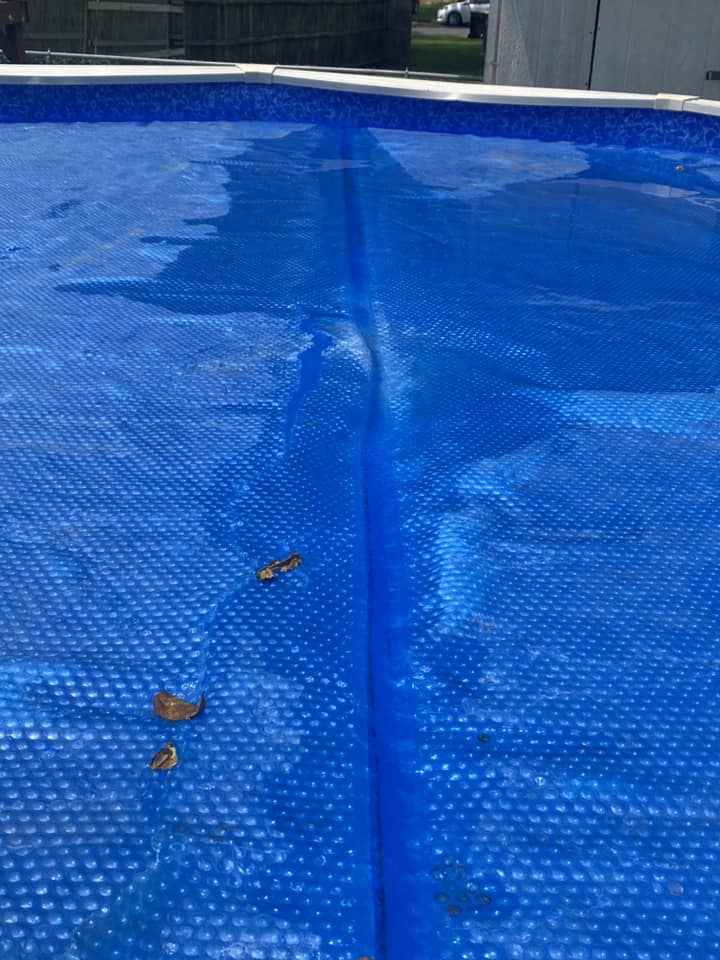
First, bubbles down always and yes you should run the pump with the solar cover on, just make sure the eyeball is pointing down just a little.
Let’s look at reasons why you can run your pool’s filtration system with the solar cover on. Here are a few points to consider:
1. Circulation and Filtration
Running the pool pump with the solar cover on is generally fine and can help with circulating and filtering the water. This ensures that the chemicals are evenly distributed and the water remains clean.
2. Heat Distribution
Having the cover on while the pump is running can also help distribute the heat more evenly throughout the pool, especially if the pool is being heated.
3. Monitoring Chemical Levels
It’s important to regularly check and adjust the pool’s chemical levels. The presence of a solar cover can affect the evaporation rate and chemical use, potentially leading to higher chlorine levels.
4. Avoiding Overheating
If you are using a heater in conjunction with the solar cover, monitor the water temperature to ensure it doesn’t get too hot. Solar covers can significantly increase water temperature, and running the heater might not be necessary during peak sunny days.
5. Safety Considerations
Always ensure safety, especially if there are children or pets around. When the pool is not in use and covered, make sure it’s secure and inaccessible to prevent accidents.
6. Regular Inspection
Check the cover regularly for any damage or wear, as a damaged cover might not function effectively and could potentially lead to debris entering the pool.
Remember, while it’s generally safe to run your pool with the cover on, it’s always a good idea to consult your pool’s manual or a professional for specific advice related to your pool’s design and equipment.
Also Read: The Best Pool Covers for Above Ground Pools
What do you do with your solar cover when not in the pool?
I personally made a pvc type of frame to wrap it up and we put it up on the deck against the railing and cover it up with a sheet, you’re not supposed to leave it in the sun unless it’s on the pool
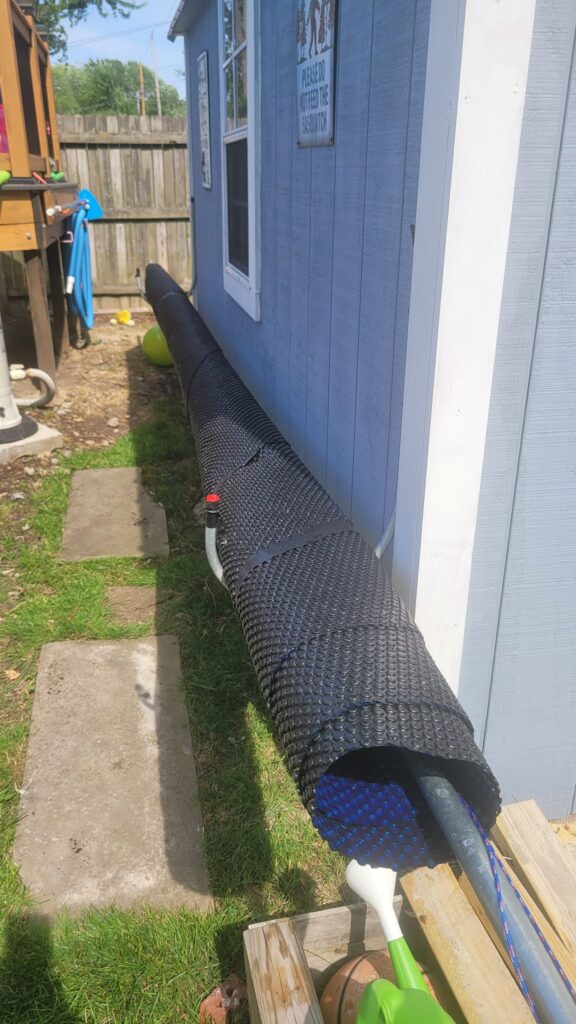
Again, when not in use, it’s important to store your solar pool cover properly to ensure its longevity and effectiveness. Here are the steps you should follow:
Step 1: Remove and Dry the Cover
Carefully remove the solar cover from the pool. Allow it to dry to prevent mold and mildew growth. This can be done by spreading it out near the pool on a clean surface.
Step 2: Fold or Roll the Cover
Once the cover is dry, fold it or roll it up. Many pool owners use a solar cover reel, which makes this process easier and more efficient. A reel also helps in preventing damage to the bubbles.
Step 3: Store in a Shaded Area
Store the cover in a shaded, cool area away from direct sunlight when not in use. UV rays can degrade the plastic over time, so avoiding prolonged exposure to sunlight is crucial when the cover is not on the pool.
Step 4: Avoid Sharp Objects
Make sure the storage area is free from sharp objects or rough surfaces that could puncture or tear the cover.
Step 5: Keep Away from Chemicals
Store the cover away from pool chemicals or other corrosive substances that might cause damage.
Step 6: Cover for Protection
If possible, place the rolled or folded cover in a protective storage bag or cover it with a tarp to keep it clean and safe from the elements.
Step 7: Regular Inspection
Regularly inspect the cover for any signs of wear or damage, and address any issues promptly to ensure the cover remains effective.
Proper care and storage of your solar pool cover when it’s not in use will help extend its life and maintain its efficiency in heating your pool and reducing evaporation.
FAQs about bubbles up or down on solar cover
Which way do bubbles go on solar cover?
The bubbles on a solar cover should face down, touching the water. This orientation allows the bubbles to trap heat and transfer it effectively to the pool water.
What side of a solar pool cover touches the water?
The bubble side of a solar pool cover should be in contact with the water. This design helps in efficiently transferring heat from the sun to the pool.
Does a pool heat up faster with the solar cover on?
Yes, a pool heats up faster with a solar cover on. The cover traps heat from the sun and reduces evaporation, leading to quicker and more efficient heating.
Pool solar blanket bubbles up or down?
For a pool solar blanket, the bubbles should be facing down. This ensures optimal heat transfer from the sun to the water.
Do bubble solar pool covers work?
Yes, bubble solar pool covers are effective. They retain heat, reduce evaporation, and can help maintain a warmer pool temperature.
Is it OK to leave solar cover on pool for a week?
Is it OK to leave solar coveIt’s generally okay to leave a solar cover on a pool for a week. However, it’s important to check chemical levels and remove the cover occasionally to let the pool breathe.r on pool for a week?
How long does it take for a solar cover to heat a pool?
The time it takes for a solar cover to heat a pool varies, depending on factors like initial water temperature, outdoor temperature, and sunlight intensity. It can take several days to see a noticeable increase.
Is clear or blue solar cover better?
Clear solar covers allow more sunlight to penetrate and heat the pool, while blue covers may reduce heat absorption slightly but are better at retaining heat. The choice depends on your specific heating and retention needs.
Does a solar cover keep pool warm at night?
Yes, a solar cover helps keep the pool warm at night by reducing heat loss through evaporation and providing insulation.
Does a solar blanket heat the pool during the day?
Yes, a solar blanket heats the pool during the day by capturing sunlight and transferring the heat to the water, while also reducing evaporation.
Before you go…
Finding the right way to use a solar pool cover is just the first step. Even the best pool maintenance practices will fail if they don’t include proper chemical care! Read my next article to ensure that your pool remains a pristine, healthy oasis all season long.
